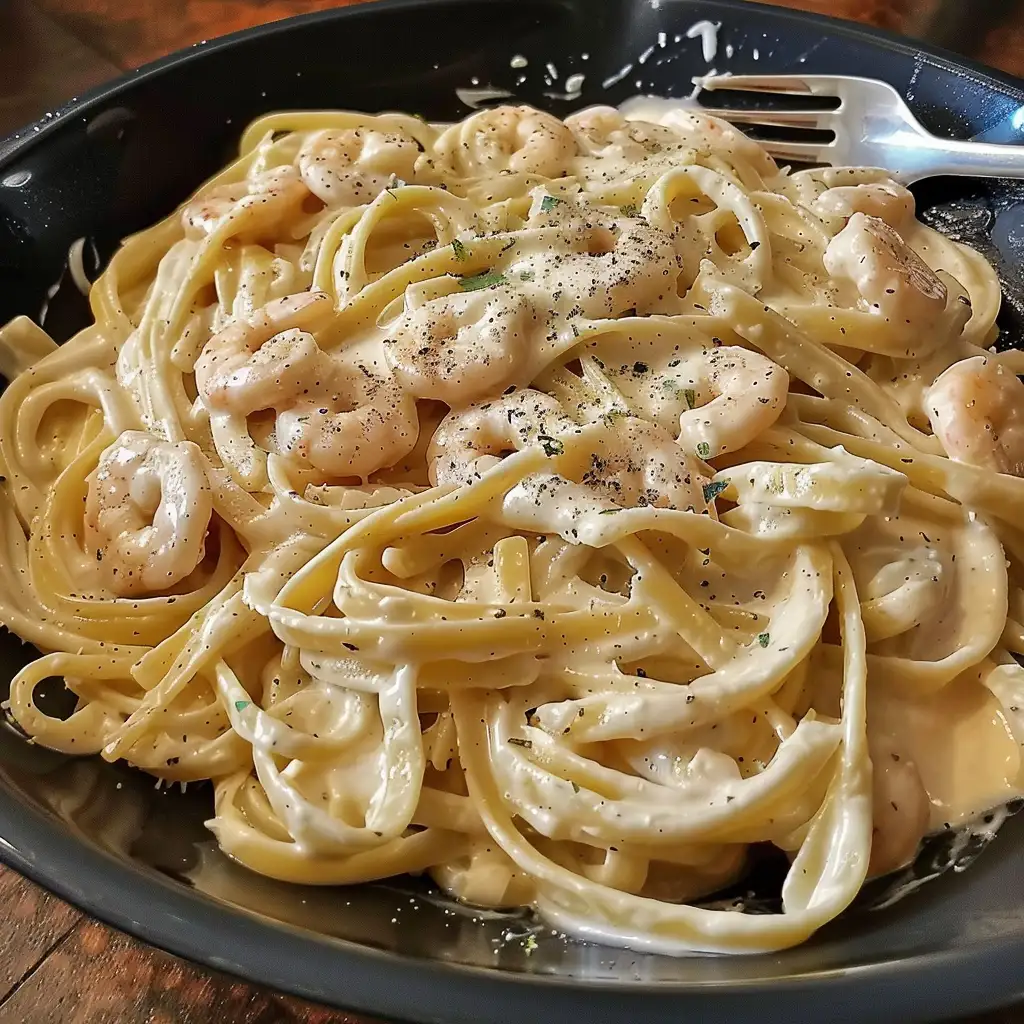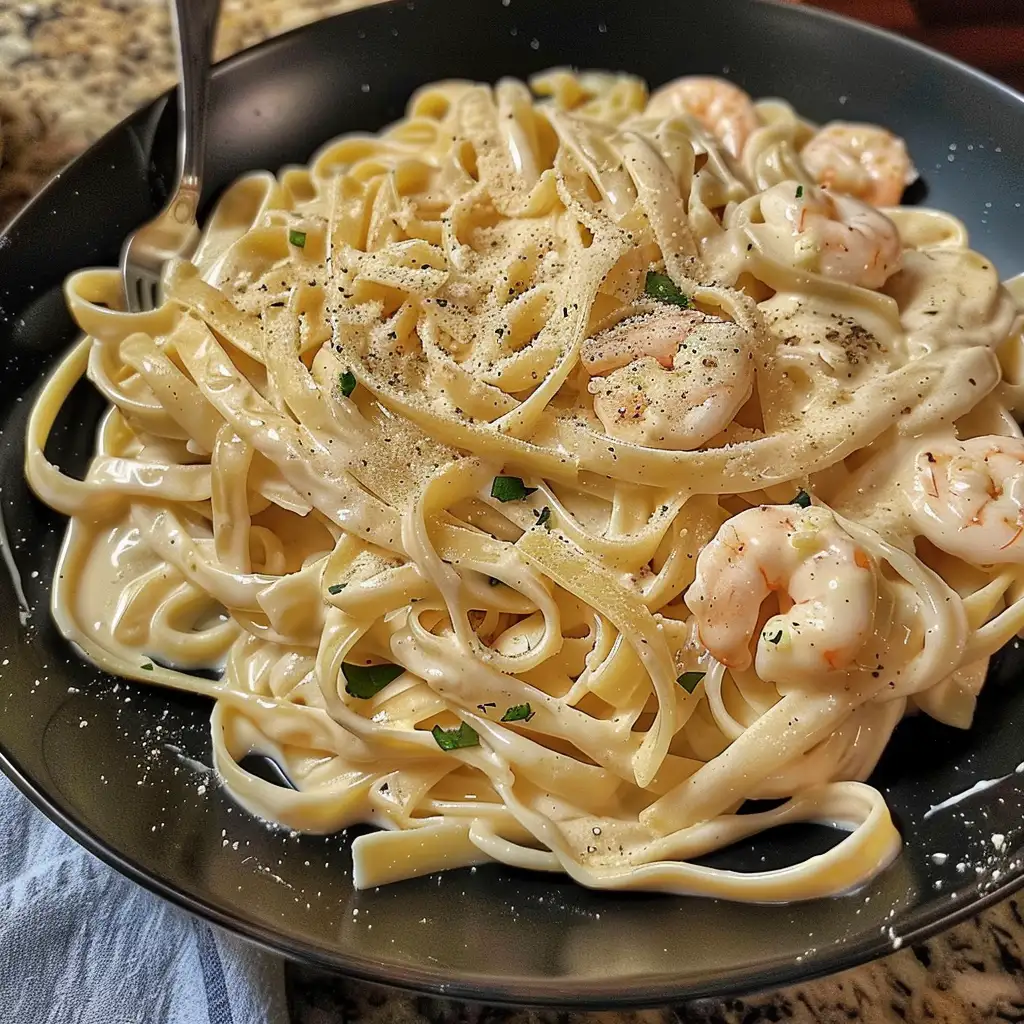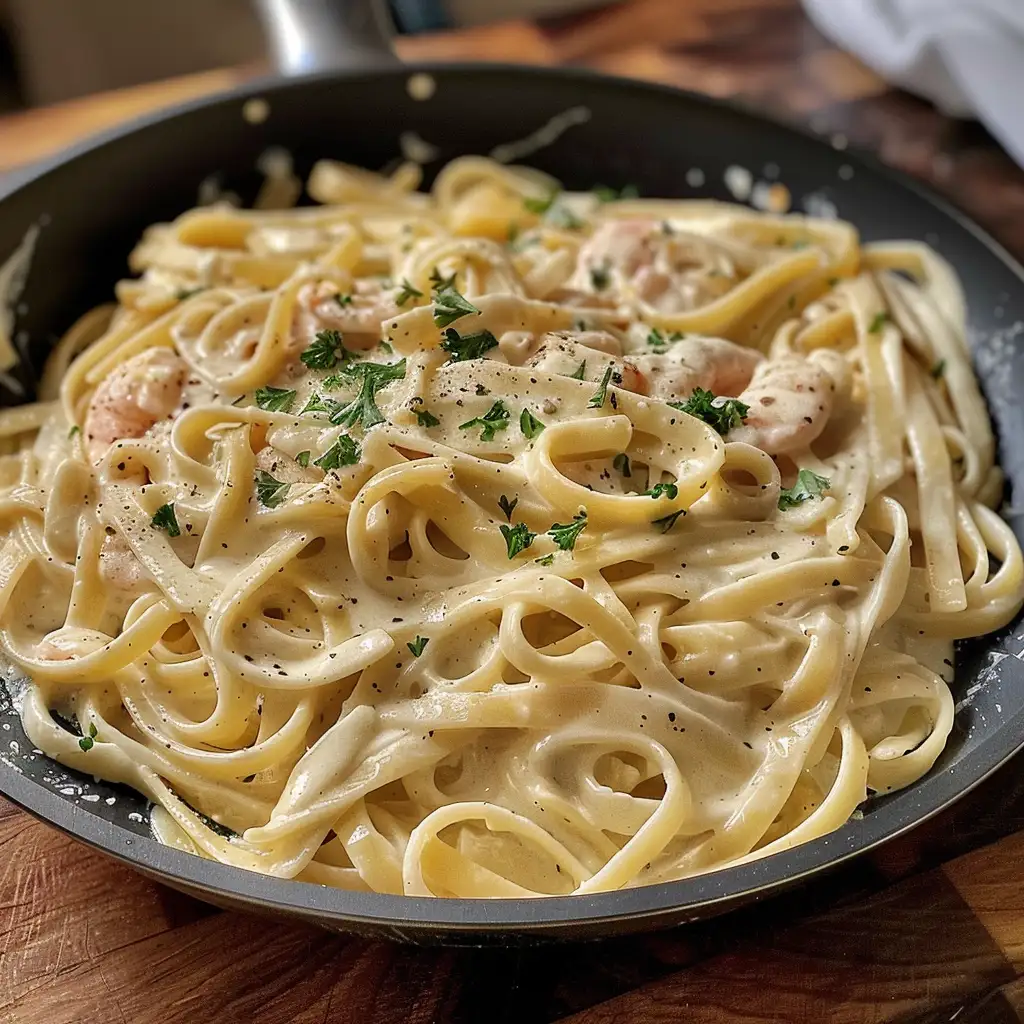Introduction to Fettuccine Alfredo
Fettuccine Alfredo is a staple in the realm of Italian cuisine, known for its creamy, rich sauce that clings to each strand of pasta. The dish’s simplicity belies its profound flavor and comforting qualities, making it a favorite among pasta lovers around the globe.
- Historical background and origin: The inception of Fettuccine Alfredo dates back to the early 20th century in Rome, Italy. It was first created by Alfredo Di Lelio in his restaurant in an effort to entice his pregnant wife to eat something during her nausea. The original concoction, which he later introduced to his restaurant’s menu, was a simple blend of fettuccine, butter, and Parmesan cheese. The dish’s popularity skyrocketed when silent film stars Mary Pickford and Douglas Fairbanks dined at his restaurant during their honeymoon and fell in love with the dish, bringing it back to the United States.
- Why it’s considered “To Die For”: The phrase “To Die For Fettuccine Alfredo” isn’t an exaggeration but a testament to the dish’s indelible impact on those who taste it. Its creamy, velvety texture combined with the perfect balance of cheese and butter creates a luxurious eating experience that’s hard to replicate. Moreover, its versatility allows it to be adapted to various dietary preferences and enhancements, making it a beloved dish for many. Whether enjoyed in its classic form or with added proteins and vegetables, Fettuccine Alfredo remains a quintessential comfort food that transcends cultural and culinary boundaries.
For enthusiasts eager to delve deeper into the history of this iconic dish or explore the nuances of creating the perfect Alfredo sauce at home, resources like Wine Enthusiast offer insights into pairing your pasta with the right wine, elevating the dining experience to new heights. Additionally, for those navigating dietary restrictions, websites like Gluten-Free and More provide valuable tips on how to enjoy this classic dish without compromising on taste or texture.
Fettuccine Alfredo’s enduring popularity is a testament to the timeless appeal of simple, high-quality ingredients combined with culinary craftsmanship. It stands as a beacon of Italian culinary excellence, inviting all who taste it to explore the rich tapestry of flavors and traditions that make it truly “to die for.”

The Classic Recipe
Fettuccine Alfredo stands as a paragon of Italian culinary simplicity, a dish where the sumptuous harmony of butter, cream, and Parmesan melds into a sauce that’s both comforting and elegantly simple. This classic recipe serves as a canvas for culinary creativity, allowing for endless variations and personalizations.
Introduction to the Classic Fettuccine Alfredo Recipe
At its core, Fettuccine Alfredo celebrates the rich flavors of its few ingredients, each playing an essential role in crafting the final dish. The recipe’s origins, tied to Alfredo Di Lelio in early 20th century Rome, spotlight the dish’s enduring appeal. From its humble beginnings, Fettuccine Alfredo has evolved into a global comfort food staple, beloved for its creamy texture and comforting taste.
Ingredients Needed
- Fettuccine pasta: The star of the dish, its wide, flat surface perfectly catches the creamy sauce.
- Butter: Unsalted, to control the saltiness of the dish while adding richness.
- Heavy cream: For that unmistakable velvety texture.
- Parmesan cheese: Freshly grated for the best flavor and integration into the sauce.
- Salt and pepper: For seasoning.
- Garlic (optional): For those who prefer a hint of garlic.
Step-by-Step Cooking Instructions
- Cook the fettuccine in salted boiling water until al dente, then drain, reserving some pasta water for adjusting the sauce consistency.
- In a large skillet, melt the butter over medium heat, then add the heavy cream, stirring until combined.
- Add the cooked pasta to the skillet, tossing until evenly coated.
- Gradually sprinkle in the grated Parmesan cheese, stirring continuously, until the sauce becomes creamy and coats the pasta.
- Season with salt and pepper to taste. If the sauce is too thick, add a little reserved pasta water to reach the desired consistency.
- Serve immediately, garnished with additional Parmesan if desired.
Variations and Personalization of the Recipe
Incorporating Proteins like Chicken or Shrimp
For a more substantial meal, you can add protein to your Fettuccine Alfredo. Grilled or pan-seared chicken and sautéed shrimp are popular choices that complement the creamy sauce.
Adding Vegetables for a Nutritional Boost
Enhance the nutritional profile of your Alfredo with vegetables like spinach, broccoli, or mushrooms. Sauté your chosen veggies and mix them into the pasta for a colorful, healthy twist.
Tips and Tricks for the Perfect Sauce Consistency
- Use freshly grated Parmesan for smoother melting.
- Reserve pasta water to adjust the sauce’s thickness after adding the cheese.
- Avoid overheating the sauce after adding the cheese to prevent the sauce from becoming grainy.
For those looking to explore further variations or to find the perfect wine to complement their Fettuccine Alfredo, visiting sites like Godairyfree.org can provide inspiration for dairy-free alternatives to the classic Alfredo sauce, ensuring everyone can enjoy this delightful dish regardless of dietary restrictions.
Fettuccine Alfredo’s timeless appeal lies in its simplicity, a testament to the idea that great cuisine doesn’t have to be complex. With these tips and variations, you can personalize your Alfredo, making a dish that’s uniquely yours while staying true to the essence of this beloved classic.
Serving and Pairing Suggestions
Crafting the perfect meal around Fettuccine Alfredo involves selecting appetizers, side dishes, and wines that complement its rich and creamy profile. The goal is to balance the meal, ensuring each element enhances the others, creating a harmonious dining experience.
Appetizers That Complement Fettuccine Alfredo
- Bruschetta: The freshness of tomato and basil atop crisp, toasted bread offers a light start.
- Caprese salad: Simple yet flavorful, combining fresh mozzarella, tomatoes, and basil.
- Antipasto: A selection of olives, artichokes, and cured meats can cleanse the palate.
Side Dishes to Balance the Meal
- Steamed asparagus: Offers a crisp, green contrast to the creamy pasta.
- Garlic sautéed spinach: Its slight bitterness pairs well with the richness of Alfredo sauce.
- Roasted Brussels sprouts: Their natural sweetness and slight crunch offer a delightful texture.
Wine Pairings
Selecting the right wine can elevate your Fettuccine Alfredo experience. A crisp, acidic white wine like Pinot Grigio or a light, fruity red like Chianti can cut through the richness of the Alfredo sauce, offering a refreshing balance. For more detailed wine pairing suggestions, exploring resources like Wine Enthusiast can provide valuable insights.

Dietary Considerations
Making Fettuccine Alfredo accessible to those with dietary restrictions involves substituting traditional ingredients with gluten-free or dairy-free alternatives without compromising the dish’s classic taste and texture.
Making Fettuccine Alfredo with Gluten-Free Pasta
- Choose high-quality gluten-free fettuccine to maintain the classic texture of the dish.
- Ensure the rest of the ingredients are gluten-free, especially if adding any processed meats or cheeses.
Dairy-Free Alternatives for Alfredo Sauce
- Use coconut cream or cashew cream as a base for the sauce.
- Nutritional yeast can replace Parmesan cheese, offering a similar cheesy flavor profile.
- For more ideas on dairy-free cooking, visiting Godairyfree.org can offer a wealth of information.
Nutritional Information
Understanding the nutritional content of Fettuccine Alfredo, especially when making substitutions, is vital for those monitoring their intake for health reasons. Considerations include calorie count, fat content, and potential allergens. When adapting the recipe, aim to preserve the dish’s essence while making it suitable for your dietary needs.
Creating a meal that centers around Fettuccine Alfredo, with thoughtful appetizers, side dishes, and wine pairings, can transform dining into a delightful experience. Meanwhile, adapting the classic recipe to meet dietary needs ensures everyone can enjoy this beloved dish, regardless of their dietary restrictions.
FAQs
Fettuccine Alfredo is a dish that has captivated the hearts and palates of many around the world. Its rich, creamy sauce combined with perfectly cooked pasta creates a comforting and indulgent experience. Here, we address some frequently asked questions to help you perfect your Alfredo dish.
What makes Fettuccine Alfredo “To Die For”?
- The seamless blend of butter, heavy cream, and Parmesan cheese creates a rich, velvety sauce that’s both simple and decadent.
- The dish’s versatility allows for endless variations, making it a favorite for both traditional and inventive cooks.
Can I use a different type of pasta?
- Absolutely. While fettuccine is traditional for its ability to hold the sauce, other pastas like linguine, tagliatelle, or even penne can be used as substitutes.
- The key is to choose pasta that complements the creamy texture of the sauce.
How can I make my Alfredo sauce thicker or thinner?
- To thicken: Add more Parmesan cheese gradually until the desired consistency is reached. Alternatively, a small amount of a flour and butter roux can be used.
- To thin: Stir in small amounts of pasta water or milk until you achieve the preferred sauce consistency.
What are some common mistakes to avoid?
- Overheating the sauce can cause it to separate or become grainy. Keep the heat low after adding the cheese.
- Not using freshly grated Parmesan can result in a less smooth sauce.
- Forgetting to reserve some pasta water for adjusting the sauce’s consistency is a common oversight.
For those looking to explore further variations of Fettuccine Alfredo or seeking guidance on perfecting the classic recipe, culinary resources like Food.com offer a plethora of tips, tricks, and recipes that can enhance your cooking journey.
By addressing these common queries and pitfalls, you’re well on your way to creating a Fettuccine Alfredo dish that truly is “to die for.” Remember, the secret to a great Alfredo sauce lies in the quality of ingredients and the care taken during preparation.


